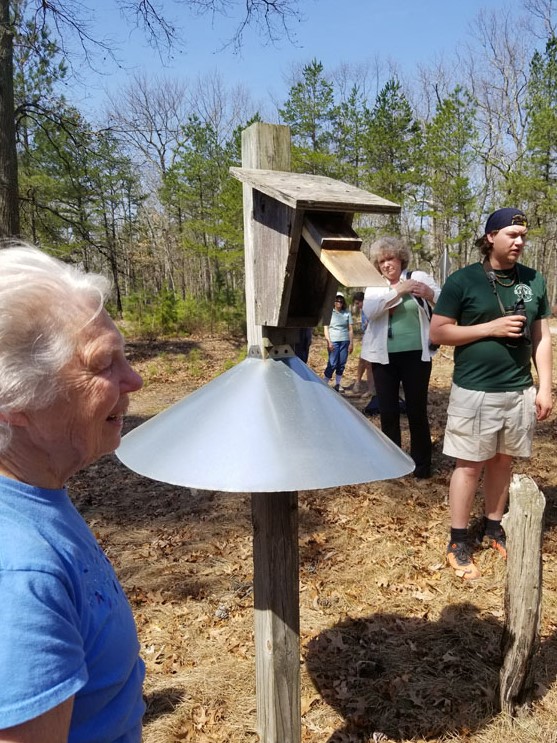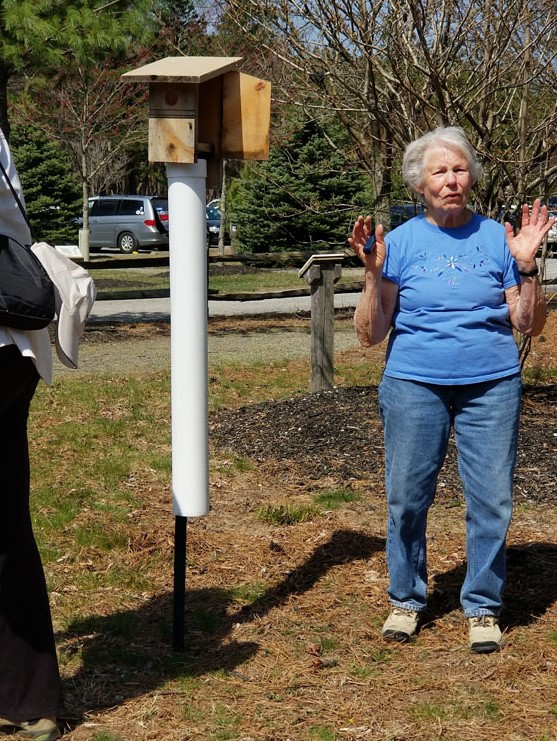
Laura Stone is the vice president of the New Jersey Bluebird Society and monitors blue bird nest boxes on trails throughout Ocean County.
Bluebirds are a native species of thrush that used to be found in abundant flocks throughout the area. They are secondary cavity dwellers and territorial ground feeders that eat insects from the ground.
They have a lot of competition for nesting areas because they are not the only cavity dwellers around, and certainly not the most aggressive. Chickadees, English sparrows, tree swallows, tufted tit mice and house wrens are all cavity dwellers. In 1758, some bozo thought it was a good idea to bring all the birds mentioned in Shakespear’s writing, over from Britain into Central Park.
English Sparrows were included and they are the prime competition for bluebird habitat in the Pine Barrens. They breed faster than bluebirds and are more aggressive than our bug eating natives and will kill adults and young as well as ruin the eggs before they get a chance to hatch.
The Bluebird Society
The Bluebird Society does their best to put up nesting boxes in appropriate areas and monitor the boxes, evicting invasive species and facilitating the success of the local bluebird population.
Bluebirds have 2 nesting cycles annually and lay 3 to 6 eggs each cycle. It takes 2 weeks to build the nest, then mom will start to lay the eggs, 1 egg each day. After she lays 3 to 6 eggs, she will sit on them and the dad will bring back food to feed her till the babies hatch. It takes 17 days before they will grow to adult size and around 11 or 12 days old the babies will begin to learn to fly.
These birds are very territorial so placement of boxes is important. They won’t nest within 300 feet (a football field) of another bluebird and they prefer to be in an open field where the grass is low cut because as ground feeders, trees aren’t required. If the box is too close to the forest edge, other species will take it over as that’s where they prefer to be… for example, wrens like a lot of brush and thicket. No brush, fewer wrens will bother the box. The box should be on a pole or post about 5′ off the ground with some protection from predators (a baffle or pvc pipe). The hole in the box should face south east to protect them from prevailing winds and trees should be within 20 or 30 feet from the box.
Bluebird boxes with 2 different kinds of protection – a baffle and a pvc pipe discourage raccoons and snakes from invading the box.


When monitoring bluebird boxes, keep in mind that moms will be laying an egg around 10am, so visit after that time. Always knock on the box first and allow the bird to escape the box before opening it up and taking a look inside.
It’s important to build, place and monitor bluebird boxes around Ocean County forever to protect and encourage the population of these precious creatures.


